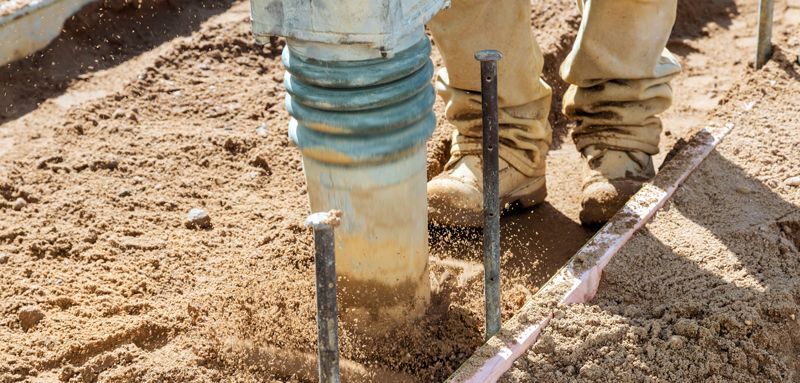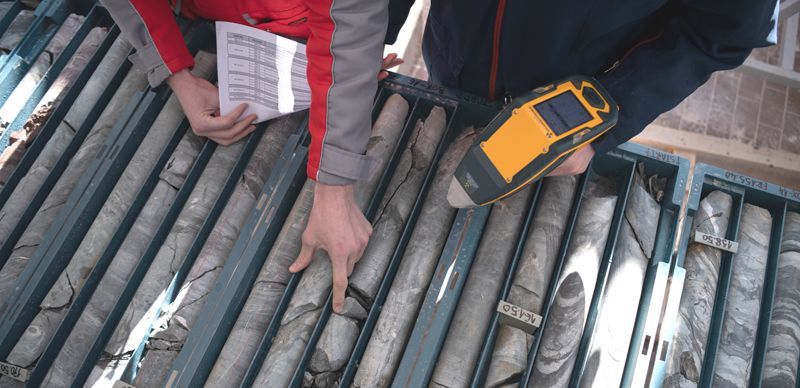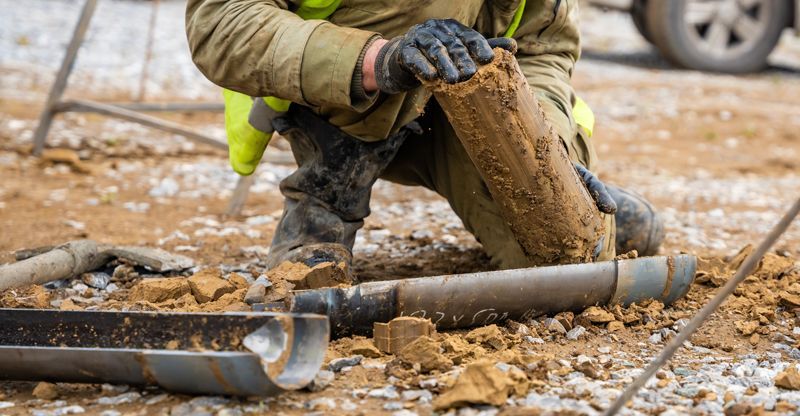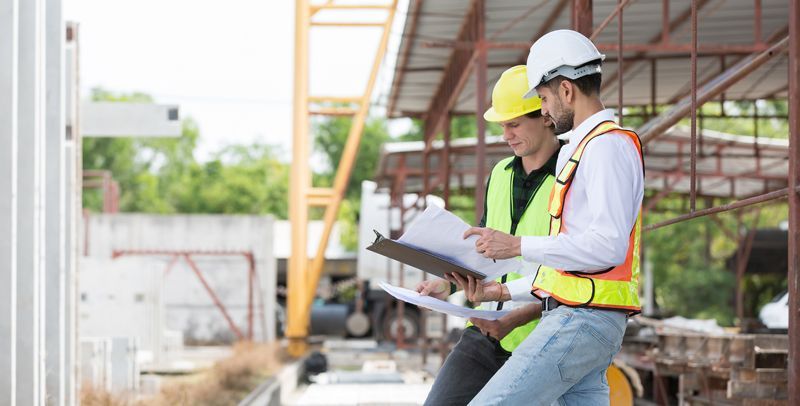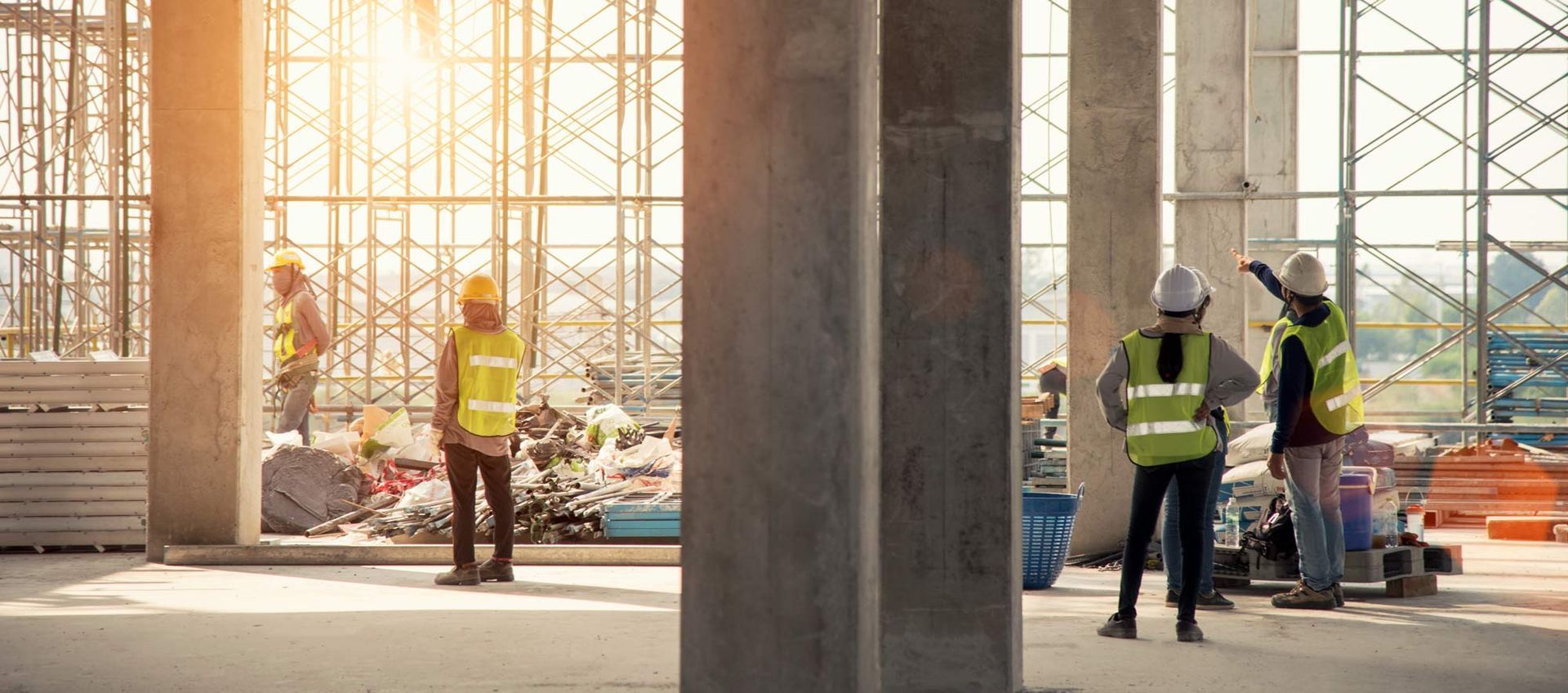Selecting the Right Materials for Geotechnical Projects

Ensure geotechnical project success. Explore how material selection impacts durability, cost, and sustainability in complex engineering tasks
Material selection is one of the most critical decisions in geotechnical engineering projects. With the right materials, structures gain the durability, safety, and cost-efficiency required for long-term success. Missteps, however, can lead to compromised stability, higher-than-expected maintenance costs, or even catastrophic failures.
Whether it's foundations, retaining walls, or underground systems, each aspect of geotechnical engineering demands materials tailored to site-specific conditions, project goals, and environmental factors. This article explores the strategic considerations that guide the selection of materials in geotechnical projects, ensuring robust outcomes and sustainable solutions.
Understanding the Importance of Material Properties
Materials used in geotechnical engineering, such as soils, aggregates, concrete, and steel, contribute directly to a project's success. Geotechnical engineers must evaluate a material's properties in relation to its intended purpose. Key properties include strength, durability, and resistance to environmental degradation—factors that vary based on geographic and project-specific conditions.
Take soil, for example. The load-bearing capacity of a foundation depends on the type of soil beneath it. Sandy soils exhibit excellent drainage but lack compression strength, while clay soils may offer high strength at some depths but are prone to expansion and contraction. For critical projects such as high-rise buildings, accurate assessment of these properties enables engineers to determine whether soil treatments or reinforcements are necessary.
Similarly, aggregates used in construction must meet specific grading, hardness, and angularity criteria to ensure stability and compatibility with concrete or asphalt. Understanding the intended application helps engineers pinpoint the most effective materials and mitigate risks.
Site-Specific Factors Dictating Material Selection
No two sites are identical. The location of a geotechnical project plays a defining role in material selection, as subsurface conditions, climate, and environmental factors vary widely. By conducting thorough site investigations, engineers can assess the unique geotechnical properties that influence material performance.
For example, groundwater levels can significantly affect the selection of materials for underground structures. Sites with high water tables require waterproofing agents, corrosion-resistant reinforcements, or specialized concrete mixes to prevent seepage, degradation, or reinforcement corrosion. Projects in earthquake-prone areas demand ductile materials to resist seismic forces and ensure structural integrity.
Environmental considerations are equally critical. Materials exposed to marine environments, for instance, require resistance to salt-induced corrosion. Projects located in cold climates might prioritize freeze-thaw-resistant materials to prevent cracking and maintain durability. By aligning materials with the natural environment, engineers improve the longevity and safety of their designs.
Balancing Performance with Cost-Efficiency
Engineering projects operate under budget constraints, making material selection a balancing act between performance and cost. While high-performance materials generally carry higher price tags, using substandard alternatives can result in costly maintenance and repairs.
For large-scale projects such as roadways and bridges, economies of scale become essential. Engineers can explore locally sourced materials that meet performance standards to reduce transportation costs. Recycled materials, like crushed concrete or crushed asphalt, also offer cost-effective options for secondary layers without compromising the performance of the primary structure.
Innovations such as fiber-reinforced polymers and high-performance concretes provide longer lifespans despite their upfront costs. For critical applications, such as bridge decks and retaining walls, these materials can significantly reduce life-cycle costs. Ultimately, the goal is to select materials that fulfill the project's performance requirements while optimizing budget allocation.
Sustainability as a Guiding Principle
Modern geotechnical engineering increasingly emphasizes sustainability. Material selection inherently affects a project's environmental impact, from energy consumption in material production to transportation-related carbon emissions. Engineers are now tasked with integrating eco-friendly alternatives while maintaining structural performance.
One common sustainable practice is the reuse of excavated soils, provided they are stabilized or graded to meet specification standards. Similarly, recycled materials are gaining traction, reducing waste while adhering to geotechnical requirements. For example, ground tire rubber has found applications in soil stabilization, enhancing both granular fill performance and sustainability.
Beyond material composition, engineers can minimize construction-related carbon emissions by selecting low-carbon concrete or blending cement alternatives such as fly ash or slag. These materials reduce greenhouse gas emissions compared to traditional cement while performing comparably in geotechnical applications.
Planning for sustainability does not stop at material selection. Proper installation and maintenance extend the lifespan of materials, reducing the need for replacements and conserving resources.
Testing and Quality Assurance
The relationship between material testing and project success is inseparable. Even the best-designed projects can fail if materials are not tested and verified during procurement and construction phases.
Testing protocols ensure that materials conform to design specifications and performance standards. For instance, proctor compaction tests for soil, aggregate gradation tests, or compressive strength tests for concrete verify that materials meet predefined requirements. These empirical results allow adjustments to be made before construction begins, avoiding issues down the line.
Another critical aspect is consistency. Materials should exhibit uniform properties throughout the project. Batch testing concrete pour samples, for instance, helps identify inconsistencies caused by variations in mix proportions, ensuring structural integrity.
Investing in rigorous laboratory and field testing prevents unexpected failures, ensures compliance with safety standards, and provides stakeholders with assurance.
Case Study Examples of Material Considerations
To better understand the role of materials in project success, consider two examples with different site requirements.
- A Deep Foundation in Urban Environments - Heavy urban infrastructure, such as metro stations requires materials specifically designed for dense soil profiles and limited space. Engineers in such cases might opt for high-strength concrete and corrosion-resistant steel for drilling piles. Detailed soil profiling is typically performed, ensuring foundation compatibility and alignment with dynamic loads such as train vibrations.
- Slope Stabilization for Erosion Control - For projects involving slope stabilization, material selection may involve synthetic geotextiles and geogrids to reinforce weak slopes. Additionally, sustainable practices could include vegetation-based methods paired with bioengineered materials that stabilize soil while promoting ecological balance.
Each project illustrates how customized material choices address unique challenges, proving that thoughtful selection correlates with successful outcomes.
The Role of Emerging Technologies
Advances in material science are transforming the way geotechnical engineers operate. New technologies improve strength, durability, and processing efficiency, offering viable alternatives to traditional methods.
For instance, nanotechnology is being leveraged to create stronger cementitious materials with enhanced resistance to environmental and chemical degradation. Smart geotextiles, equipped with sensors, now monitor soil conditions in real time, enabling engineers to make adjustments based on live data.
Additive manufacturing, or 3D printing, has also opened new doors. Experimental projects are using 3D-printed concrete to create complex shapes for retaining walls, combining customization with sustainability. Such innovations provide engineers with tools to elevate material performance while addressing modern challenges.
Final Thoughts
Material selection in geotechnical engineering is far more than a technical process—it's a critical determinant of a project's success. From understanding material properties to navigating site-specific conditions, sustainable practices, and quality assurance, every step in the selection process holds immense weight.
For engineers and stakeholders alike, making the right choices ensures performance, safety, and cost-efficiency while minimizing environmental impact. By staying informed about modern materials and technologies, geotechnical professionals are well positioned to meet the industry's evolving demands.


